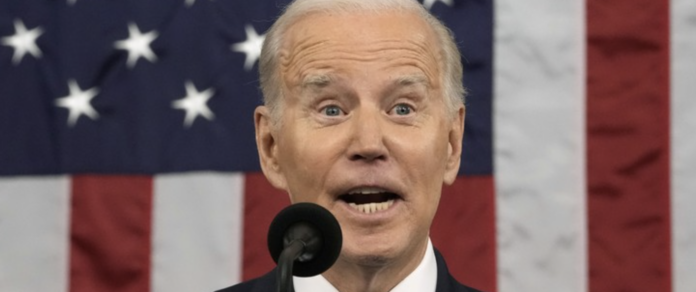One historical analogy that may spring to mind when one looks at the American scene today is the Western Schism. This is the division of the 14th-century papal papacy between Rome, Avignon, and is what can be seen if one examines the American scene, economically, culturally and politically. Although analogical correlations are rarely fully cognate, they can often offer useful parallels between the past and the present. This is what we see in the U.S.
It may be useful to have a brief overview of the Schism. The Western Schism is a split within the Catholic Church that saw pontiffs living in Rome and Avignon while claiming to be true popes. Edwin Mullins meticulously records the situation in The Popes of Avignon. A Century in Exile. The seat of theological authority alternated between Rome and Avignon, leading to the removal of Avignon’s papal enclave for forty years.
There were nine Avignon Popes in total, many of them antipopes. However, only Clement VII and Benedict XIII were canonically recognized as antipopes. P.G. identifies both of them as antipopes. Maxwell-Stuart writes that both were unsavoury characters in Chronicle of the Popes. Clement, a weak, unscrupulous man who helped to destroy the Knights Templar and Benedict, who refused to resign and barricaded himself in his castle while continuing to fraudulently elect new cardsinals. In 1418, the Avignon popes were finally overthrown by the Council of Constance.
The political schism in America can also be considered disruptive. It may have historic consequences that could eventually destroy the continuity and life of a great country. It is common to call the 2020 presidential election “irregular.” This is a blatant euphemism. Many have come to believe that the election was marred by corruption, scandal and covert manipulation. There is ample evidence to support this belief. It is impossible to imagine a system that involved vote harvesting, absentee votes, mysterious closings of voting stations at night, malfunctioning tabulators and suppression of critical information by major digital platforms “to wagep an election”, in Victor Davis Hanson’s words. This was especially true in swing states.
The outcome should not have been in doubt when the incumbent addressed large and enthusiastic crowds throughout the country, while his opponent campaigned essentially out of his basement and spoke to small, clearly staged gatherings. The result was, metaphorically speaking, the anointment of an “antipresident”. This is something that everyone knows, even those who swear to silence or fear reprisal. Courage and honesty are often in short supply during turbulent times. Richard Fernandez wrote in “Biden and Our Vanishing Golden Age” that the desire to separate oneself from disaster is natural. It makes it difficult to talk about any mishap, as if we could reduce its reality, or at least avoid taking responsibility.
An “antipresident” has been installed in the place of power. It has led to a spiraling inflation, bankruptcies, increased racial tensions and a rise in crime.
Stephen Kruiser, in an incisive article written for PJ Media, cites the Democrat Party to be an engine of lies. He deplores “the fiction that placed a pretender,” a presumably “moderate source of reason,” at the Oval Office. He writes that “The Biden lie” is “the most insidious,” given the damage that his “empty brain” has done to the nation.
It is almost as if the presidency has moved from Washington to Avignon, where it pursues policies that are destructive of national coherence and national splendor. This could lead to the end of an empire. Although the papal office was restored to Rome in ancient times, there is no guarantee that it will be reinstated in Washington. There is no guarantee that America will survive the next two years without something like a Council of Constance.
The Western Schism was followed, interestingly, by the Great Schism Between the Western and Eastern Churches. This is not Rome and Avignon, but Rome and Constantinople. It is a historical correlation which could prefigure a civil war between the liberal West, and the orthodox East. This would be the more serious consequence of the current imbroglio. Charles Rivers wrote in The Great Schism & the Western Schism that Rome had become a ghost town. It was inhabited only by hardy survivors. Yet, the palace of the Supreme Pontiff, the heart of Church, was still there.
This is a plausible future. There will be decay, but there will still be a core. This may be a sign of hope. However, unless there is decisive legislative action, it will remain a thin one. According to Michael Lind, American Affairs, the future will see “nepotistic Oligarchies” in a handful of fashionable metropolitan areas, but they are surrounded by a despised, depopulated and derelict ‘hinterland’. This rupture, which we call the American Schism, is both prophetic and retrospective.
American Schism can only be accelerated by the Avignon presidency. There were seven consecutive Avignon popes. The U.S. had a similar presidential line that was stumbling and incomplete. However, we could say there were a few Avignon aspirants among Democrats. This culminated in the current occupant, who like his similarly shallow and controversial Democrat predecessor may be considered an “antipresident.” These figures, like Clement or Benedict, are doubtful characters. The White House tenure of the former is becoming increasingly dangerous.
Donald Trump and Ronald Reagan were the only “Roman” presidents in recent history, both fallible, but uncompromising in maintaining and defending their country. We will see them again.


